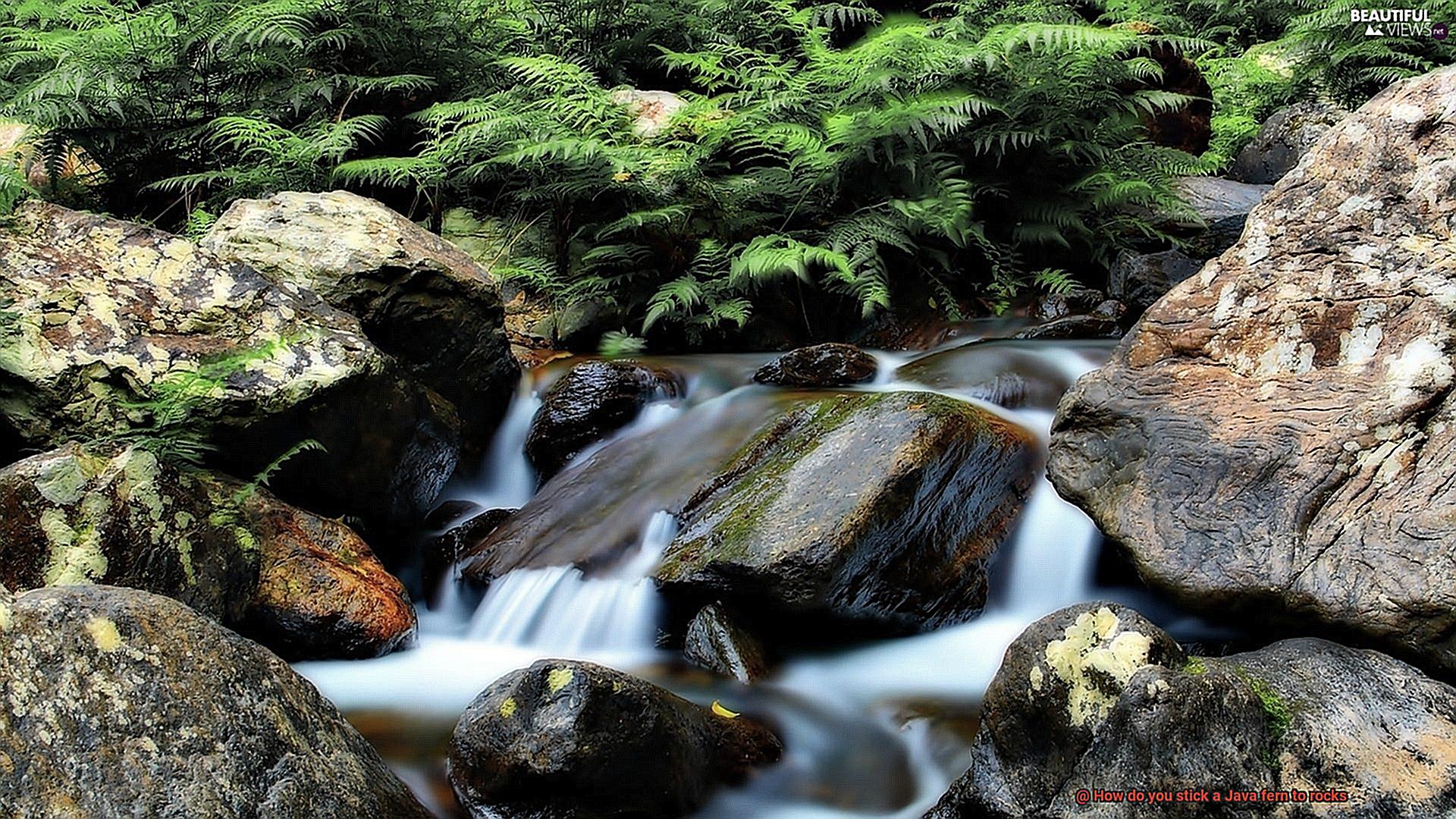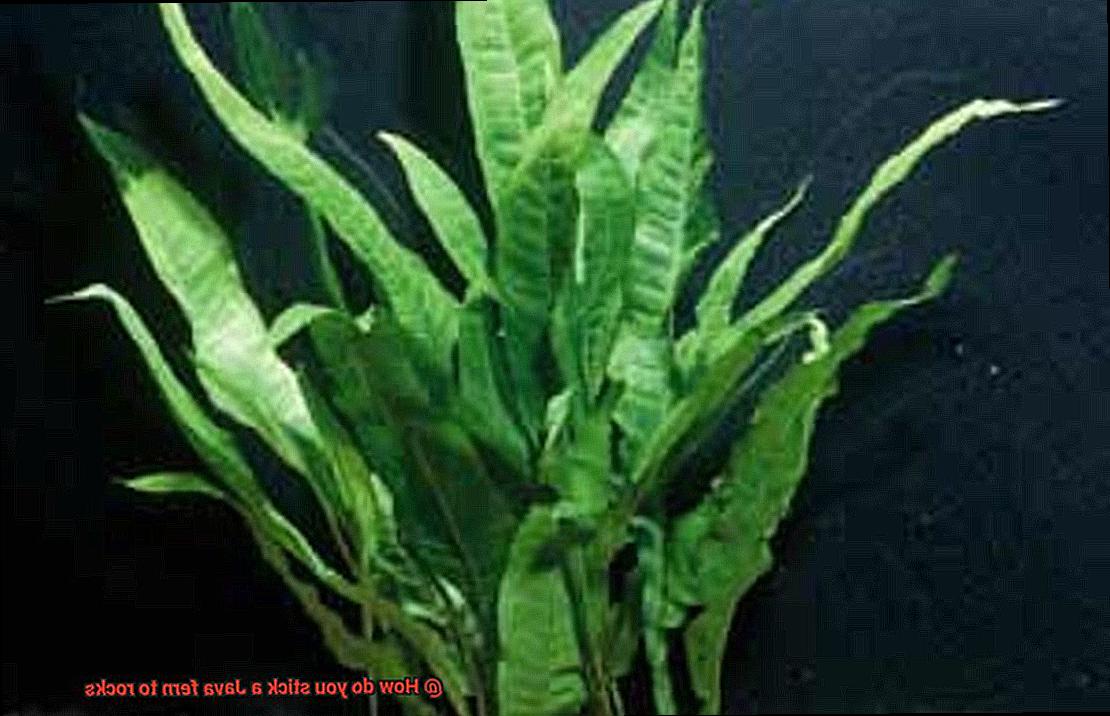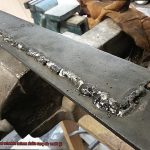Ready to take your aquarium from ordinary to extraordinary? Look no further than the stunning Java fern. This aquatic plant not only adds a vibrant splash of green to your underwater world, but it also creates a captivating backdrop for your aquatic friends to thrive in.
Want to make your aquascape truly unforgettable? We’ve got you covered with our expert tips on how to securely attach Java ferns to rocks.
Get ready for a DIY project that will breathe life and beauty into your underwater oasis. Let’s dive in and unleash your creativity.
What is a Java Fern?
Contents
- 1 What is a Java Fern?
- 2 How to Choose the Right Rock for Java Ferns
- 3 Tying a Java Fern with Fishing Line or Cotton Thread
- 4 Using Aquarium Glue to Attach a Java Fern to Rocks
- 5 Ensuring the Plant Receives Adequate Light and Nutrients
- 6 Tips for Keeping Your Java Fern Healthy
- 7 Benefits of Attaching Java Ferns to Rocks
- 8 Potential Problems When Attaching a Java Fern to Rocks
- 9 Conclusion

One plant that stands out among the rest is the Java Fern. With its versatile nature and stunning appearance, the Java Fern has become a favorite choice among hobbyists. In this blog post, we will dive into the world of Java Ferns, exploring their characteristics, benefits, and how to attach them to rocks for a natural-looking aquascape.
Characteristics of the Java Fern:
The Java Fern, scientifically known as Microsorum pteropus, is native to Southeast Asia and is commonly found in rivers, streams, and marshes. It boasts elongated green leaves that are leathery in texture and arranged along a central stem. Growing up to 8-12 inches in height, this plant can spread through its rhizomes, which are horizontal stems that anchor it to various surfaces.
Versatility and Adaptability:
One of the remarkable features of the Java Fern is its ability to grow both submerged and partially submerged. Submerged leaves are narrower and more finely dissected, while emersed leaves are broader and have a more robust appearance.
This versatility allows the Java Fern to adapt to various aquatic environments, making it an ideal choice for aquariums with different lighting setups and water conditions.
Benefits to Aquarium Ecosystems:
Apart from its aesthetic appeal, the Java Fern provides numerous benefits to aquarium ecosystems. Its dense foliage creates hiding places for fish and other aquatic creatures, reducing stress levels and creating a natural environment. Additionally, this plant absorbs excess nutrients from the water, reducing the risk of algae growth and improving water quality.
Attaching Java Fern to Rocks:
To create a natural-looking aquascape, many hobbyists choose to attach Java Ferns to rocks.
There are two popular methods for this: using fishing line or cotton thread, or using a non-toxic aquarium glue. When using fishing line or thread, select a rough-surfaced rock and carefully tie the fern to it, ensuring not to cover the rhizome. If opting for glue, choose a product safe for aquatic plants and fish, clean the rock thoroughly, apply the glue, and press the fern onto it.
How to Choose the Right Rock for Java Ferns
If you have a Java fern and want to create a cozy home for it, choosing the right rock is crucial. Not only do rocks provide a surface for your fern to attach to, but they also add a natural touch to your aquarium or terrarium. In this guide, we will explore the factors you should consider when selecting the perfect rock for your Java ferns.
Size and Shape:
When it comes to rocks, size matters. Look for a rock that fits nicely in your tank or aquarium. Avoid choosing a rock that is too big or too small, as it may throw off the balance of your tank’s overall aesthetic appeal. Instead, find a rock with cracks and crevices where your Java fern can attach its roots and rhizome. Think of it as moving into a cozy new house with lots of hiding spots and places to explore.
Composition:
Creating a safe environment for your Java fern is essential. Select rocks that are inert and won’t change the water chemistry. Lava rock, slate, or granite are great options as they are known to be stable and won’t impact the pH levels of your tank. On the other hand, avoid rocks like limestone or marble, which may contain harmful substances that could endanger the health of your fern.
Cleanliness is Key:
Before introducing any rock to your tank, make sure to give it a good wash. Remove any dirt, debris, or potentially harmful substances by rinsing it thoroughly under running water. For an extra layer of cleanliness, you can also boil or soak the rocks in water to eliminate any impurities that may be lurking on their surface. This step ensures that you are providing a clean and safe environment for your Java fern to thrive.
Aesthetic Appeal:
Style should never be overlooked when choosing a rock for your Java fern. Select a rock that complements the appearance of your tank and enhances the beauty of your fern. River rocks, with their various shapes and sizes, provide a natural look and blend well with different tank setups. On the other hand, lava rocks are lightweight and porous, making them perfect for attaching your fern and providing an interesting focal point in your tank.
Attachment Methods:
To securely attach your Java fern to the rock, you have two options: fishing line or aquarium glue. Fishing line or cotton thread can be used to tie the fern onto the rock, allowing its roots to grow around it naturally. This method provides flexibility and allows for easy repositioning if needed. Alternatively, you can use aquarium glue specially designed for aquatic plants. Make sure to follow the instructions carefully and choose a glue that is safe for your ferns and fish. This method ensures a strong and long-lasting bond between the rock and your Java fern.
Tying a Java Fern with Fishing Line or Cotton Thread
Creating a stunning aquatic environment in your aquarium requires attention to every detail, including how to attach your Java fern to rocks. Among the various methods available, using fishing line or cotton thread is a popular choice among aquarium enthusiasts.
This method allows the plant to grow and naturally attach itself over time, enhancing both the aesthetic appeal and health of your tank.
In this comprehensive guide, we will walk you through the step-by-step process of tying a Java fern with fishing line or cotton thread, providing a secure attachment that will allow your plant to flourish.
Step-by-Step Instructions:
- Gather the materials needed: a Java fern, smooth and clean rocks, fishing line or cotton thread, and a pair of scissors. It’s crucial to select rocks without rough surfaces to prevent damage to the plant’s delicate roots.
- Soak the rocks in water for a few minutes to remove any debris or chemicals, ensuring a clean surface for the Java fern to attach to.
- Carefully trim away excess leaves or roots from the Java fern. This step facilitates easier attachment to the rock and promotes healthy growth.
- Position the Java fern on the rock in your desired location. Start wrapping the fishing line or cotton thread tightly around the base of the plant, ensuring multiple wraps for a secure attachment.
- Be cautious not to pull too tightly, as this could harm the plant. The aim is to provide support without constricting growth.
- Once securely tied, use scissors to trim any excess line or thread, leaving a small tail to prevent unraveling.
- Gently place the rock with the attached Java fern back into your aquarium, ensuring it is positioned in an area with appropriate lighting and water flow for optimal growth.

Over time, as the Java fern develops new roots, it will naturally attach itself more firmly to the rock. You can remove the fishing line or cotton thread once the plant has securely established itself.
Monitoring and Maintenance:

Regularly monitor the Java fern and its attachment to the rock. If you notice any signs of damage or loosening, reattach the plant using the same method described above. Remember to provide suitable conditions for your Java fern’s growth, including proper lighting, water quality, and nutrient levels.
Using Aquarium Glue to Attach a Java Fern to Rocks
Not only does this method ensure a steadfast bond, but it also allows for imaginative placement, transforming your aquarium into a captivating aquascape. In this comprehensive guide, we will lead you through the step-by-step process of using aquarium glue to attach a Java fern to rocks, guaranteeing a robust and enduring attachment.
Step 1: Prepare the Rocks and Java Fern
To commence, meticulous preparation is essential. Ensure that both the rocks and Java fern are pristine and dry. Rid the rocks of any debris or algae, and gently rinse the Java fern to eliminate any dirt or impurities. This preliminary step is crucial as it enhances the adhesive properties of the glue, enabling a stronger bond between surfaces.
Step 2: Choose the Right Glue
Selecting an appropriate adhesive is paramount for achieving a successful attachment. Opt for a cyanoacrylate-based glue, commonly recognized as super glue or gel-type adhesive. This type of glue exhibits rapid and secure bonding capabilities, making it ideal for affixing plants to rocks.
Step 3: Apply the Glue
With utmost care, squeeze a small quantity of aquarium glue onto the desired area of the rock surface. Exercise restraint when applying the glue to prevent any excess from seeping into the water, which may disrupt the delicate balance of your aquatic environment.
Step 4: Attach the Java Fern
Delicately press the roots of the Java fern onto the glue-coated area, ensuring that they firmly adhere to the adhesive. Maintain gentle pressure for a few seconds, allowing the glue to set and forge a robust bond between the roots and rock surface.
Step 5: Allow Drying Time
Refrain from touching or disturbing the glued area until the adhesive has thoroughly dried. The drying time may range from a few minutes to several hours, contingent upon the specific glue utilized. Exercise patience and grant ample time for the glue to set properly.
Step 6: Monitor and Adjust
As your Java fern flourishes, its roots may expand, potentially detaching from the glued area over time. Regularly monitor the plant’s growth and readjust as necessary. Reapply glue or employ alternative attachment methods, such as fishing line or thread, to maintain a secure bond between the plant and the rock surface.
Ensuring the Plant Receives Adequate Light and Nutrients
Creating a stunning aquascape in your aquarium requires ensuring that your plants, such as the Java fern, receive adequate light and nutrients. By attaching the Java fern to rocks using aquarium glue, you not only add natural beauty to your tank but also provide a secure attachment that promotes its growth and overall health.
Let’s dive into the importance of light for the Java fern. While it can adapt to various lighting conditions, it still needs a certain amount of light to flourish. Take into consideration the lighting conditions in your aquarium when attaching the Java fern to rocks.
These ferns prefer moderate to low levels of light, so direct sunlight should be avoided as it can lead to excessive algae growth and damage their delicate leaves.
Instead, opt for indirect or filtered light by placing your tank in a well-lit room away from direct sunlight or using artificial lighting sources like full spectrum LED lights. These lights mimic natural sunlight, promoting healthy growth and ensuring your Java fern thrives.
Now let’s discuss nutrients. Although Java ferns are slow-growing plants, they still require essential nutrients for their well-being. To provide these nutrients, consider using nutrient-rich substrates designed specifically for aquarium plants. These substrates release nutrients slowly into the water column, providing a steady supply over time.
Liquid fertilizers formulated for aquarium plants are another effective method of ensuring nutrient availability. Adding these fertilizers to the water on a regular basis supplements any deficiencies in the substrate or water column. Be sure to follow the manufacturer’s instructions to avoid over-fertilization, which can harm your Java fern.
When attaching your Java fern to rocks using aquarium glue, it is crucial to clean the rocks thoroughly to remove any debris or algae. Apply a small amount of glue to the rock and firmly press the Java fern against it for a few seconds to ensure a strong bond. Allow the glue to dry completely before placing the rock in your tank.
Tips for Keeping Your Java Fern Healthy
Java ferns are popular aquatic plants known for their beautiful, feathery leaves. Whether you’re a beginner or an experienced aquarium enthusiast, keeping your Java fern healthy is essential for its growth and longevity. In this guide, we’ll explore some expert tips to help you maintain the health of your Java fern and ensure it thrives in your aquarium or terrarium.
Provide Proper Lighting:
To ensure the health of your Java fern, it’s important to provide it with the right lighting conditions. These plants thrive in moderate to low light, so placing them in an area where they can receive indirect sunlight or artificial lighting is ideal. Direct sunlight can cause their delicate leaves to burn and damage the plant. By providing the right lighting, you’ll help your Java fern grow lush and vibrant.
Maintain Optimal Temperature:
Java ferns are tropical plants and prefer a temperature range of 68-82°F (20-28°C). Keeping the temperature within this range is crucial for their health. Fluctuations in temperature can stress the plant and hinder its growth. Investing in a reliable heater to maintain the optimal temperature will create a comfortable environment for your Java fern.
Ensure Good Water Quality:
Java ferns are sensitive to poor water quality, so maintaining clean and well-filtered water is crucial for their health. Regularly monitoring water parameters such as pH, ammonia, nitrite, and nitrate levels will help ensure they are within the appropriate ranges for a healthy aquatic environment. This will prevent diseases and keep your Java fern thriving.
Provide Adequate Nutrients:
While Java ferns can obtain nutrients from the water column, they also benefit from additional fertilizers. Using liquid fertilizers specifically formulated for aquatic plants or adding root tabs near the plant’s roots can provide essential nutrients like nitrogen, phosphorus, potassium, and trace elements. These nutrients will support healthy growth and vibrant foliage.
Avoid Burying the Rhizome:
The rhizome is the thick stem-like structure from which the Java fern’s leaves grow. It should never be buried in the substrate or covered with gravel or rocks. Burying the rhizome can lead to rot and ultimately kill the plant. Instead, anchor the Java fern by attaching it to rocks or driftwood. This will allow the roots to attach and grow naturally, ensuring the plant’s health.
Benefits of Attaching Java Ferns to Rocks
Transform your aquarium into an enchanting underwater paradise with the stunning beauty and countless benefits of Java ferns. In this article, we’ll explore why attaching these aquatic plants to rocks is a game-changer for your tank, with a special focus on the wonders of glue.
Aesthetics:
Create a realistic aquascape reminiscent of Java ferns’ natural river and stream habitats by attaching them to rocks. The delicate leaf structures and vibrant green foliage of these plants will transport you to a mesmerizing underwater world, adding a touch of natural beauty to your aquarium.
Secure Anchoring:
Say goodbye to constantly rearranging your plants. Unlike other species that need substrate for rooting, Java ferns are epiphytic. By attaching them to rocks, you ensure they stay firmly in place, preventing any unwanted floating or uprooting caused by energetic fish. Your aquascape will remain intact even during water changes.
Promotes Healthy Growth:
Positioning Java ferns’ leaves optimally by attaching them to rocks allows for maximum exposure to light and nutrients. Since these plants absorb moisture and nutrients through their leaves, this method ensures healthier growth and lush foliage, benefiting both the plants and your tank’s ecosystem.
Hiding Places and Shelter:
Give your fish a cozy little getaway by attaching Java ferns to rocks. These plants provide additional hiding spots and shelter in the tank, creating safe spaces where shy or territorial species can seek refuge from predators or simply relax. Your aquatic inhabitants will feel secure and at home in their new hiding places.
Algae Control:
Keep your aquarium pristine by harnessing the power of Java ferns’ dense foliage. These plants compete with algae for nutrients and light, preventing excessive algae growth in your tank. Additionally, the shading effect created by the attached ferns makes it difficult for algae to thrive, reducing the need for frequent cleaning and maintenance.
Potential Problems When Attaching a Java Fern to Rocks
Attaching a Java fern to rocks can be a beautiful way to enhance the natural aesthetic of your aquarium. However, it is not without its potential problems. To ensure a successful attachment and avoid any pitfalls, it is important to be aware of these potential issues.
One common problem when attaching Java ferns to rocks is poor adhesion. You want your ferns to stay firmly in place, not drift away like a leaf on the wind. To achieve a secure attachment, it is crucial to choose the right method and adhesive. Regular household glue or super glue should be avoided, as they can contain toxic chemicals that may harm your precious plants. Instead, opt for aquarium-safe adhesives specifically designed for use with aquatic plants. These adhesives are non-toxic and will not harm your ferns or other inhabitants of the tank.
Another potential problem is the introduction of harmful substances into the aquarium water. Rocks can harbor algae, bacteria, or other pathogens that can wreak havoc on your delicate ferns and other aquatic life. To prevent this, it is essential to properly clean and prepare the rocks before attaching your Java ferns. Give them a thorough scrub with a brush and rinse them diligently to eliminate any potential contaminants.
Nutrient absorption is also a concern when attaching Java ferns to rocks. These plants rely on their root systems to absorb essential nutrients from the water. When attached to rocks, their access to these vital nutrients may be limited. To ensure healthy growth, consider supplementing their diet with liquid or substrate fertilizers specifically formulated for aquatic plants.
Lastly, be cautious when attaching your Java ferns to rocks to avoid damaging the plant itself. The delicate leaves and rhizome can easily break or become damaged during the process. Take your time, handle them with care, and be gentle to minimize any potential harm.
IlwLgUyRVpc” >
Conclusion
To effectively attach a Java fern to rocks, there are a few simple steps you can follow.
First, select a healthy Java fern with sturdy rhizomes. Then, carefully position the fern on the desired rock surface.
Next, use fishing line or cotton thread to secure the fern in place by gently tying it around the base of the plant. Make sure not to tie it too tightly, as this could damage the delicate roots.
Finally, give your newly attached Java fern some time to acclimate and establish itself on the rock.






